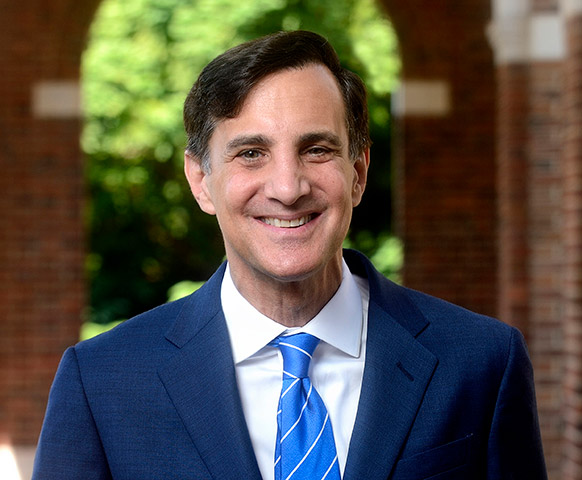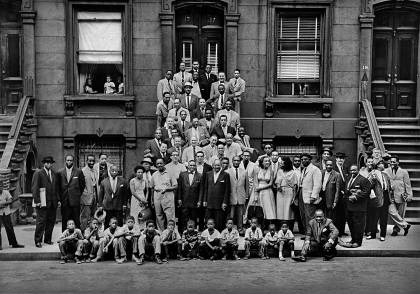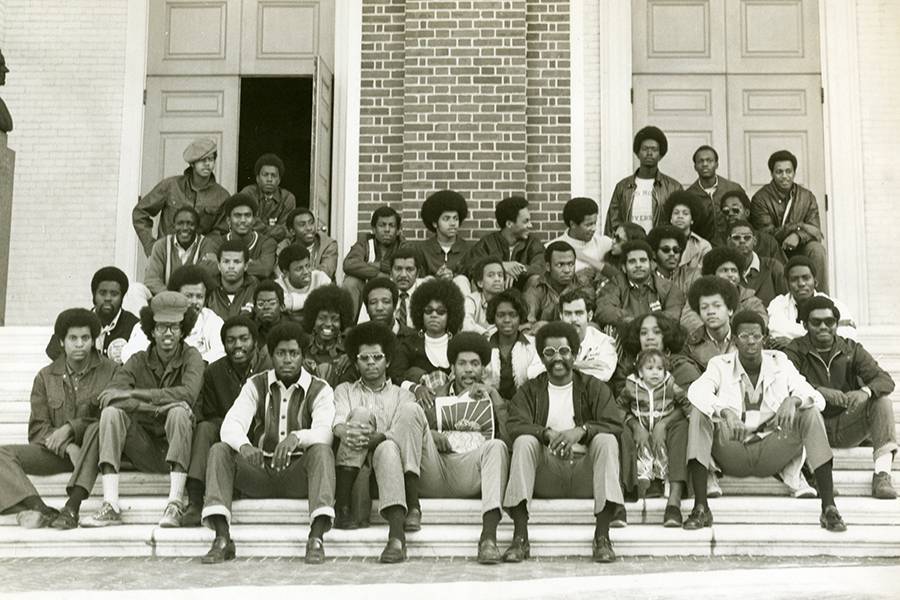
Image caption:
Ronald J. Daniels
President
On an auspicious day in 1970, a call went out for our university's first significant cohort of African American students to gather on the steps of Shriver Hall for a photograph.
When I first saw this now iconic photo, I thought it should be called A Great Day at Hopkins because, whether the photographer intended it or not, it echoed another iconic image, this one from 1958, known as A Great Day in Harlem. That summer, an Esquire photographer assembled 57 of the world's great jazz musicians—including Sonny Rollins, Count Basie, Dizzy Gillespie, and Thelonious Monk—on the steps of a Harlem brownstone to take a historic picture.
Both photographs capture an extraordinary group of people at a significant moment in history. Each image also transcends the scene itself. To quote the novelist Ralph Ellison, each is "a document and a symbol." They mean something.

Image caption: Photographer Art Kane published this photo in the January 1959 issue of Esquire magazine
Image credit: Wikimedia Commons
This past June, I had the privilege of joining the Black Faculty and Staff Association and a packed house of colleagues, family, and friends—along with many of the students present in 1970—to induct that striking and momentous Hopkins photograph into the Indispensable Role of Blacks at Johns Hopkins. An evolving exhibit created and managed by the BFSA and co-sponsored by the university, the Indispensable Role of Blacks and its now 69 inductees make visible the rich history and vital contributions of blacks at Johns Hopkins.
Thanks to the work of the BFSA and the exhibit's nominating committee, led by Anita Norton and Sharon Morris, the Indispensable Role of Blacks enables us to celebrate these people and their remarkable achievements.
And it is exemplary of the important and necessary work driving our JHU Roadmap on Diversity and Inclusion, the goal of which is the recruitment and retention of a diverse and excellent cadre of faculty, students, and staff. This spring, we released our second progress report. There remains, of course, more work ahead, but the data were encouraging. Minority faculty increased from 30% to 32%; underrepresented minority faculty increased from 8% to 9%; African American faculty increased from 4% to 5%; and underrepresented minority faculty departures have been declining, a change from our inaugural report. And our entering class is poised to be not just extraordinarily talented but also the most diverse in the last decade: more than 32% underrepresented minority (up from 13.9% in 2009) and 13.3% African American (up from 5.9% in 2009).
As we welcome our newest Blue Jays this fall, I recall what I told attendees at the Indispensable Role of Blacks induction ceremony: All these people, all these voices, are essential to Hopkins' success—past and present—and will be instrumental in guiding our future.

Ronald J. Daniels
President









